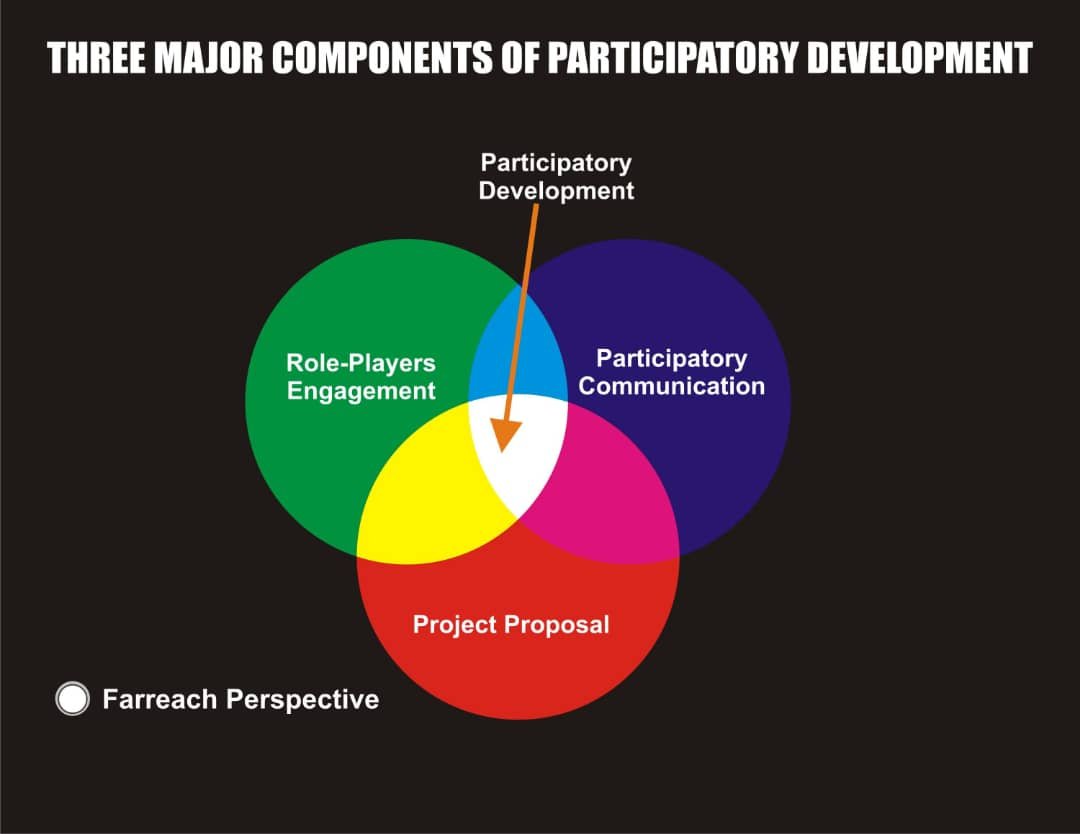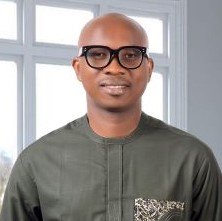Transforming Development in Africa: The Farreach Approach by Chijioke Dikeocha
Development theories have long shaped international efforts to address global inequalities, but traditional frameworks often fall short when applied to diverse regions like Africa. The Farreach Perspective, Farreach Framework, and Farreach Theory, developed by Chijioke Dikeocha, offer a refreshing and more holistic approach to development, one that is grounded in justice, cultural integrity, and sustainability.
In this article, we will compare Farreach with other prominent development theories and explore how it can be applied to improve development interventions in Africa.
The Farreach Perspective: A New Lens on Development
Conventional development theories often prioritize economic growth, technological progress, or political reforms, but these approaches tend to overlook the historical, cultural, and ecological complexities that shape local communities. The Farreach Perspective challenges this narrow focus by promoting a more inclusive, locally grounded view of development.
What Makes the Farreach Perspective Different?
While Modernization Theory suggests that developing nations must follow a Western-driven path to achieve success, the Farreach Perspective rejects the idea of a single model of progress. Instead, it argues that development should be context-specific and rooted in local knowledge, historical realities, and cultural practices.
Farreach asks critical questions:
- What are the local histories, legacies, and assets that can drive development?
- How can indigenous practices and knowledge systems be integrated into modern development interventions?
This shift in focus ensures that development is not a one-size-fits-all solution but a collaborative, context-sensitive process that respects and builds upon local realities.
The Farreach Framework: A Comprehensive Guide to Development
Building on the Farreach Perspective, the Farreach Framework provides a structured, systems-based approach to development that addresses five key interconnected pillars:
- Historical Justice: Acknowledging and addressing the enduring effects of colonialism and systemic exploitation.
- Cultural Integrity: Emphasizing the importance of local knowledge, traditions, and governance systems in shaping development initiatives.
- Ecological Stewardship: Prioritizing environmental sustainability and resilience, ensuring that development is ecologically sound.
- Power Redistribution: Actively shifting decision-making power to local communities and marginalized groups.
- Transformational Resilience: Building long-term resilience that not only adapts to change but also transforms communities in the face of adversity.
Farreach Framework vs. Other Development Models
Traditional frameworks, like Participatory Development and Sustainable Development, share some common goals with the Farreach Framework, such as inclusion and environmental protection. However, Farreach goes a step further by integrating historical justice and power redistribution into its development process.
For example, while Participatory Development emphasizes local involvement, it can often be limited to consultative roles, with little change in actual decision-making power. The Farreach Framework demands a shift in power dynamics, ensuring that marginalized groups—particularly women, youth, and indigenous communities—are not only involved but are central to the development process.
The Farreach Theory: A Relational Approach to Development
At the heart of the Farreach Theory is a radical rethinking of development itself. Unlike traditional theories, which often see development as a linear process imposed by external actors, Farreach Theory emphasizes that development is relational, built on the understanding that communities are active agents of their own transformation.
Farreach Theory vs. Dependency Theory
Dependency Theory, popularized by theorists like Andre Gunder Frank, critiques the global economic system and its impact on developing nations. While it highlights the inequalities between the Global North and South, it often portrays developing countries as passive victims of exploitation. Farreach Theory, by contrast, acknowledges global inequalities but focuses on local agency, empowerment, and the decolonization of development processes.
Instead of merely critiquing external systems, Farreach Theory promotes a collaborative, self-determined path forward. It seeks to empower communities to design their own development strategies, based on their unique resources, knowledge, and aspirations.
Applying Farreach Thinking: Practical Tools for Development Workers
To apply the Farreach Perspective, Framework, and Theory effectively in African contexts, development professionals need practical tools and strategies that emphasize community empowerment, sustainability, and equity.
1. Understand Historical Context
Before implementing any project, it’s crucial to understand the historical backdrop that has shaped the community. Development workers should engage in a historical justice audit to assess how past injustices—such as colonization or land dispossession—continue to affect local communities. This enables interventions that are not only relevant but also restorative.
2. Center Cultural Integrity
Farreach advocates for development interventions that are not only inclusive but also respectful of local cultures. This means integrating indigenous knowledge, governance structures, and spiritual practices into modern solutions. Development professionals should ask: How can we blend traditional knowledge with contemporary techniques to create sustainable, culturally appropriate interventions?
3. Empower Local Communities: Redistribute Power
A critical part of the Farreach Framework is power redistribution. Development workers must ensure that local communities—particularly marginalized groups—have genuine decision-making authority in the development process. This could involve establishing community-led committees, empowering local leaders, and ensuring that resources are allocated based on community priorities, not just donor agendas.
4. Foster Ecological Stewardship
Environmental sustainability must be at the core of any development initiative. Whether it’s through agroecology, climate-resilient infrastructure, or natural resource management, development interventions should ensure that local ecosystems are preserved and restored. This aligns with Farreach’s call for ecological stewardship that prioritizes long-term, sustainable development.
5. Build Transformational Resilience
Instead of focusing on immediate outputs, Farreach encourages development workers to cultivate transformational resilience in communities. This means fostering the capacity for communities to adapt to changing circumstances—whether economic, political, or environmental—while retaining their identity and dignity.
Using the Farreach 1 Toolkit to Apply Farreach Theory
To bridge the gap between theory and practice, Chijioke Dikeocha has developed the Farreach 1 Toolkit—a comprehensive set of tools and methodologies designed to help development professionals apply the Farreach Theory in real-world contexts. The toolkit offers practical, actionable strategies that guide the design, implementation, and evaluation of development programs.
Key Components of the Farreach 1 Toolkit
- Historical Justice Mapping Tools: These tools help development workers assess the historical context of a community, identifying key events, traumas, and resources that have shaped local realities. This process allows for historically-informed interventions that acknowledge past wrongs and foster healing.
- Cultural Integrity Frameworks: These checklists and diagnostic tools help development practitioners evaluate the cultural compatibility of interventions. By ensuring that local practices, traditions, and values are integrated, workers can design more culturally sensitive and locally relevant programs.
- Power Mapping Templates: These tools facilitate the identification of power dynamics within communities, pinpointing who holds influence and who is excluded. Power mapping enables development workers to identify gaps in representation and strategically support marginalized groups.
- Systemic Analysis Worksheets: These templates allow practitioners to understand the interconnectedness of various social, economic, and environmental factors that affect development. They help map out systemic issues and identify leverage points for intervention that can have a multidimensional impact.
- Community Resilience Building Tools: These tools focus on strengthening local leadership and institutional capacity. They guide the development of resilience-building strategies that empower communities to navigate future challenges without losing their cultural or ecological identity.
How Development Workers Can Use the Farreach 1 Toolkit
- In Project Design: Use historical justice mapping to ensure that interventions are grounded in an understanding of past and present realities.
- In Implementation: Employ power mapping templates to ensure that power dynamics are addressed, and marginalized groups are included in decision-making.
- In Monitoring and Evaluation: Use systemic analysis worksheets to track the interconnectedness of development challenges and assess long-term impacts.
- In Sustainability Planning: Leverage community resilience tools to design programs that not only meet immediate needs but also build local capacities for future resilience.
The Farreach 1 Toolkit equips development professionals with practical tools to implement Farreach Theory in a way that is locally rooted, equitable, and transformational.
Conclusion: Moving Beyond Traditional Development Models
The Farreach Perspective, Framework, and Theory offer a new paradigm for development in Africa. By integrating historical justice, cultural integrity, ecological stewardship, power redistribution, and transformational resilience, Farreach provides a roadmap for more holistic, sustainable, and empowering interventions.
For development workers committed to genuine, long-lasting change in Africa, the Farreach Approach offers an alternative that challenges existing power structures, recognizes local agency, and builds on indigenous wisdom.
By shifting from a donor-driven, top-down model to a community-led, relational approach, Farreach invites us to co-create a more equitable, sustainable, and inclusive future for Africa.


